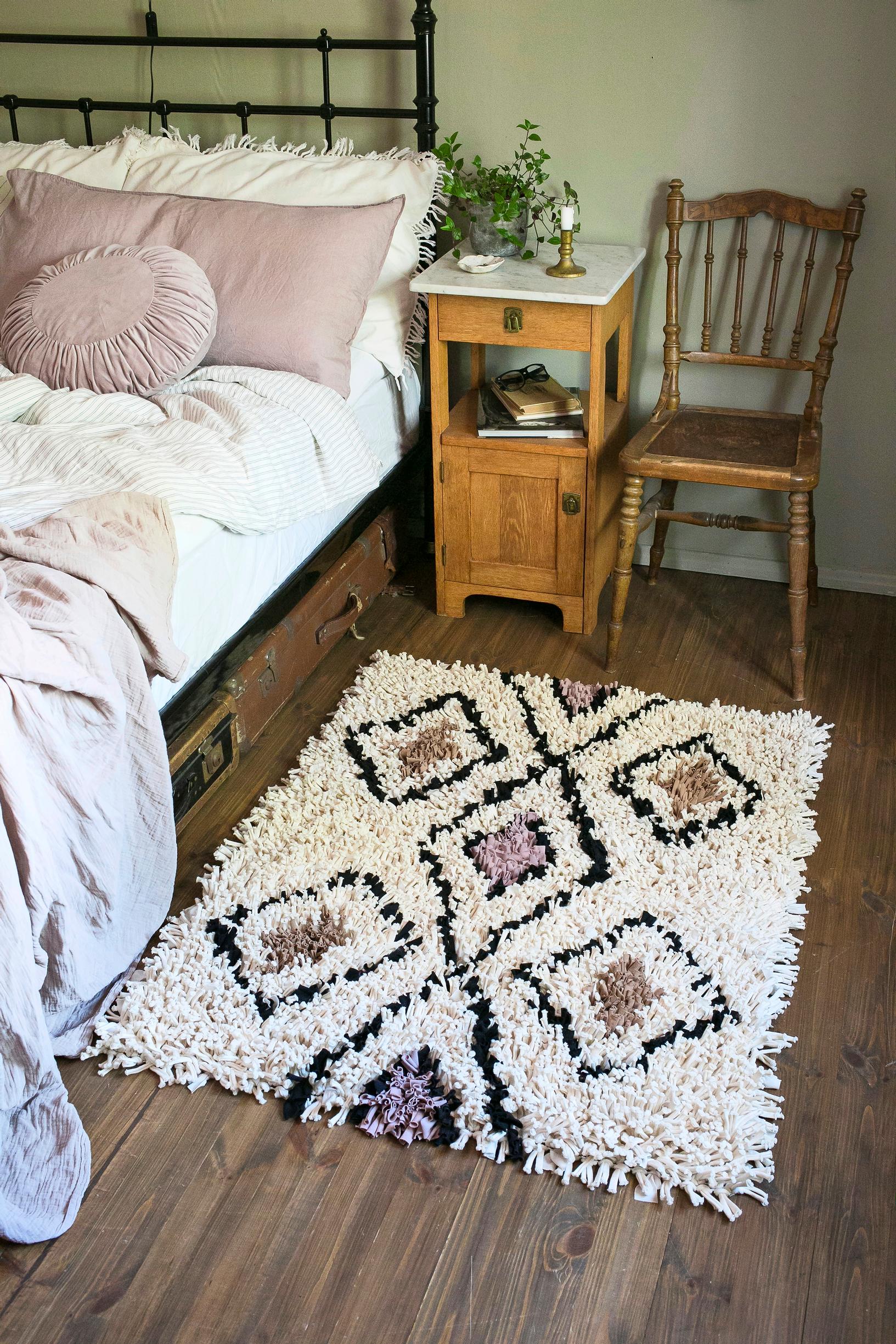
Upcycled softness
Make a fun fringed rug from old clothes
A rug made from old clothes is a modern twist on the fringed rugs popular in the 1970s. This DIY upcycled rug tutorial shows how to repurpose your worn-out T-shirts into an eco-friendly home decor piece by tying them onto a rubber anti-slip mat.
Rug from old clothes: materials
- Large-grid anti-slip mat reinforced with polyester
- 8 mm (US 11) crochet hook
- Strips cut from jersey or other non-fraying, relatively thin fabric, or ready-made jersey yarn
- Permanent marker
- Scissors
The rug pictured here measures about 120 × 95 cm. It’s made from two men’s black T-shirts, two brown and one off-white sleeveless women’s top, one short-sleeve and one long-sleeve purple children’s jersey shirt, and about 2.5 kg of off-white ready-made jersey yarn, showcasing how to make recycled rugs with minimal waste. This approach to repurposing old garments is also a fun and environmentally conscious way to create personalized designs.

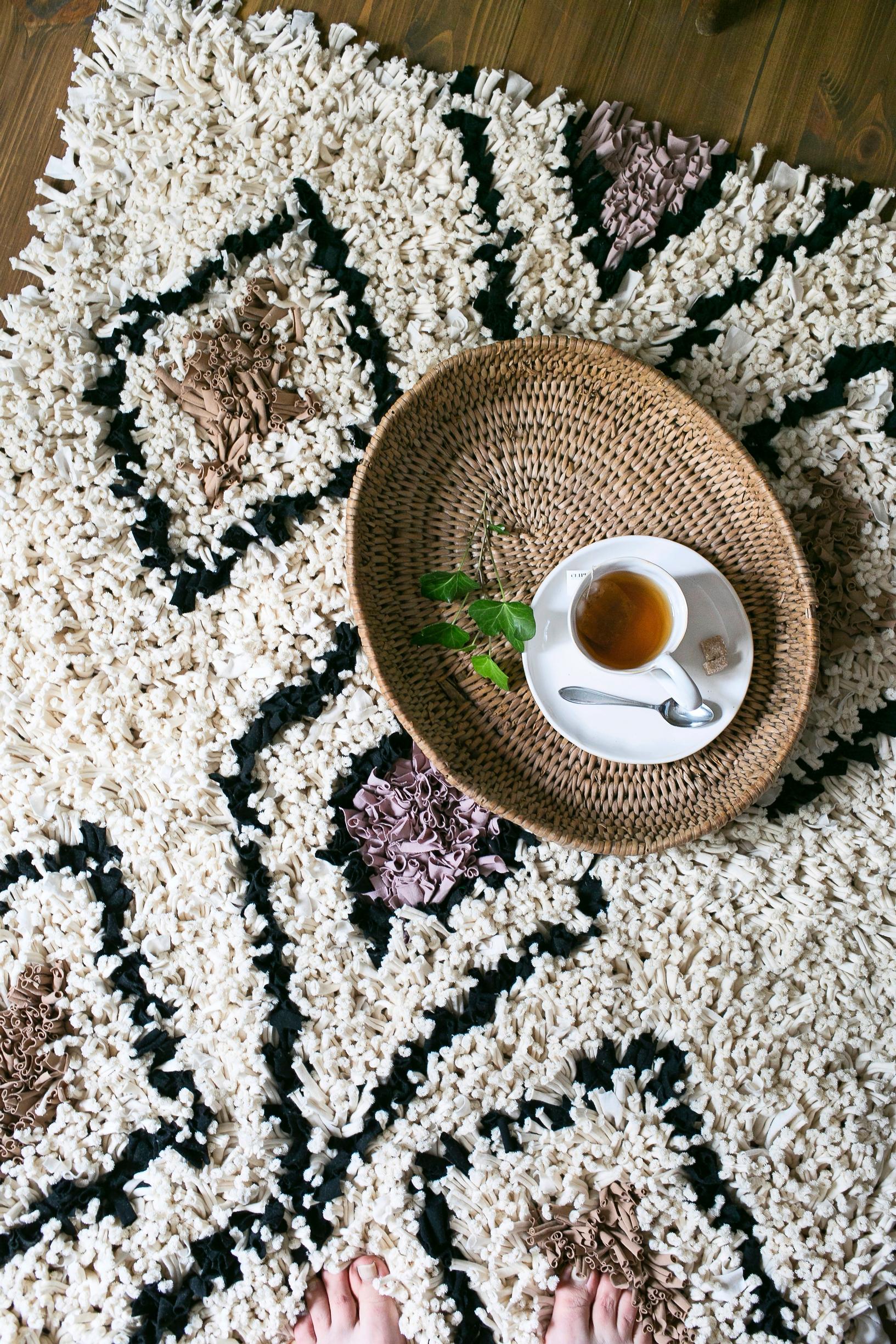
Rug from old clothes: instructions
- Plan and draw your pattern on the anti-slip mat with a marker. Keep in mind that the rug will shrink somewhat lengthwise because of the knots.
- Cut the recycled fabric into strips about 2–3 × 12 cm in size.
- Attach the strips to the mat with lark’s head knots so that every other horizontal row in the grid gets a knot on its lower strand. Always tie the next row in an alternating pattern to the previous row. Also tie knots on the outermost vertical strand of each square along the rug’s vertical edges. If something goes wrong, you can easily undo the knots.
- Here’s how to make a lark’s head knot: Use a crochet hook to pull the fabric strip under and around the crosswise strand of the anti-slip mat until it forms a loop. Next, use the hook to pull the open ends of the strip through the loop and tighten (see the image below).

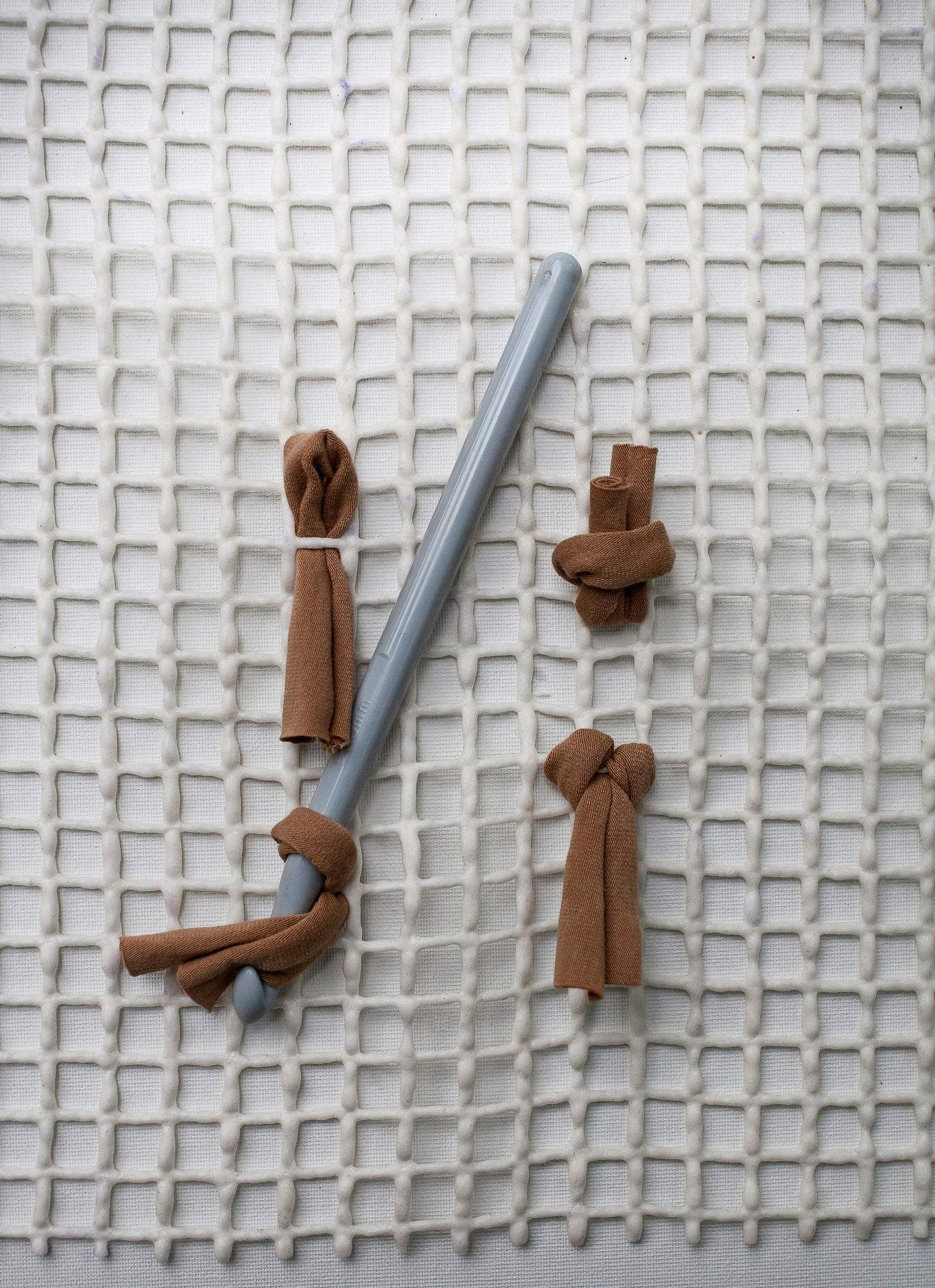

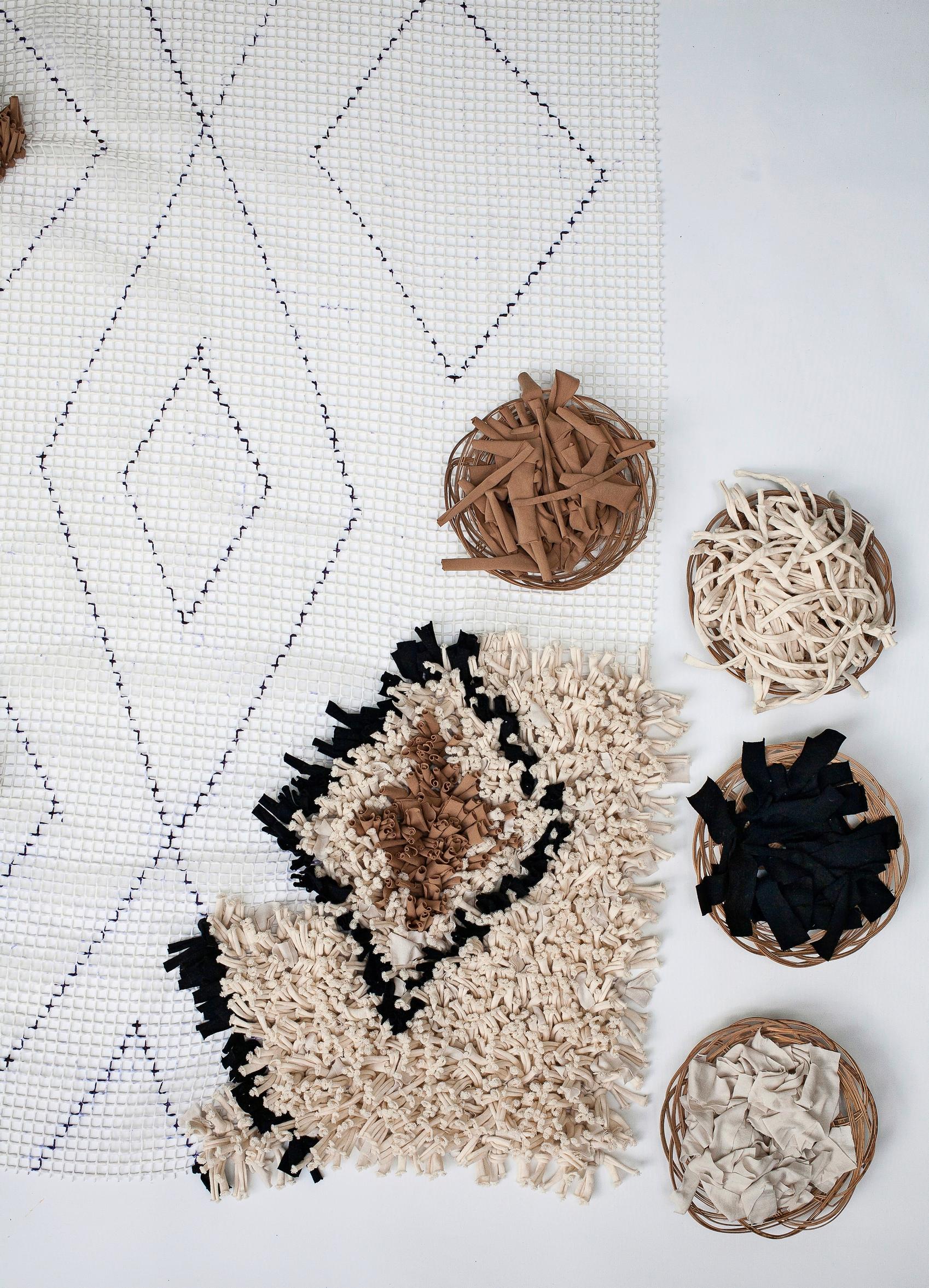

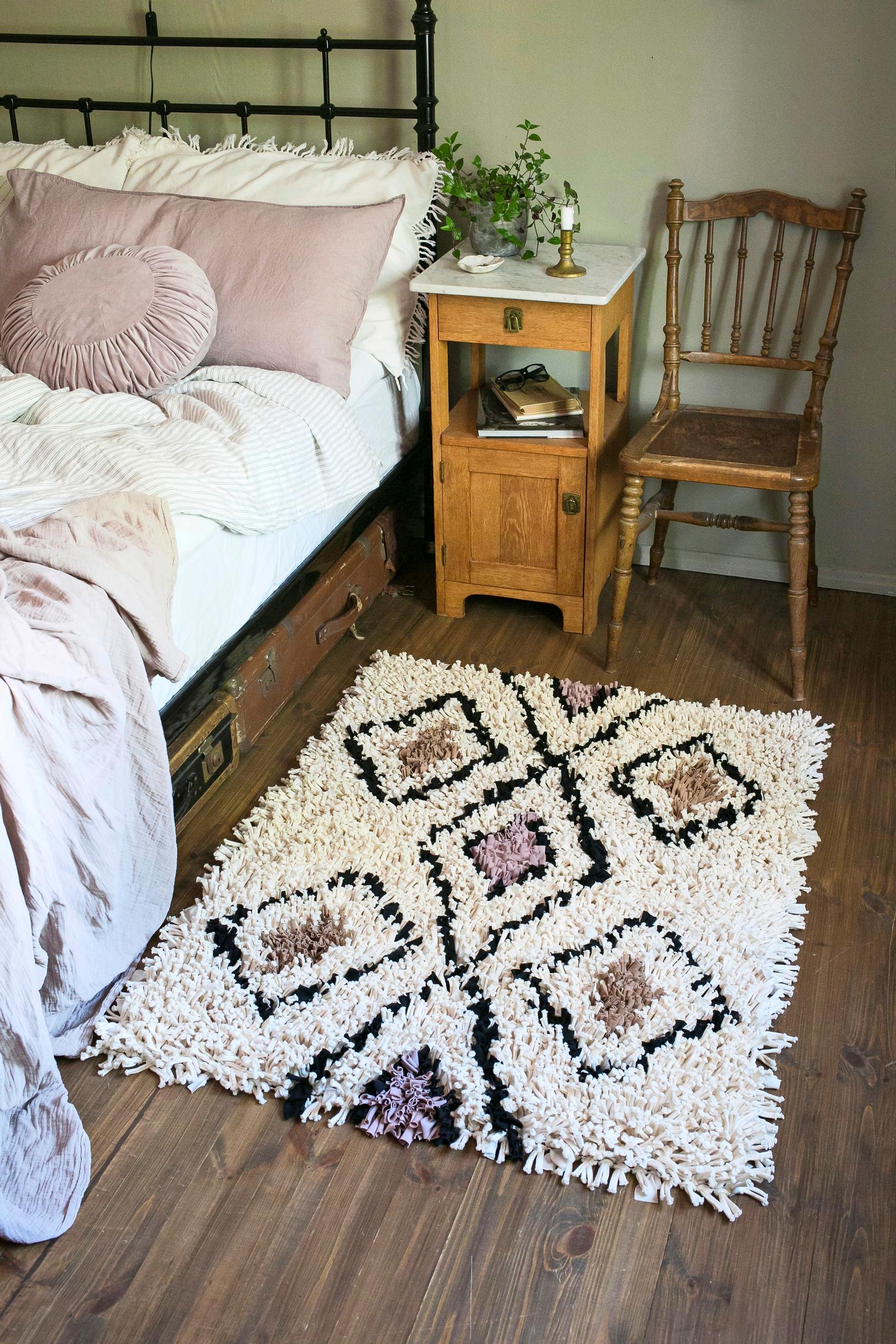
Most recent
Latest


